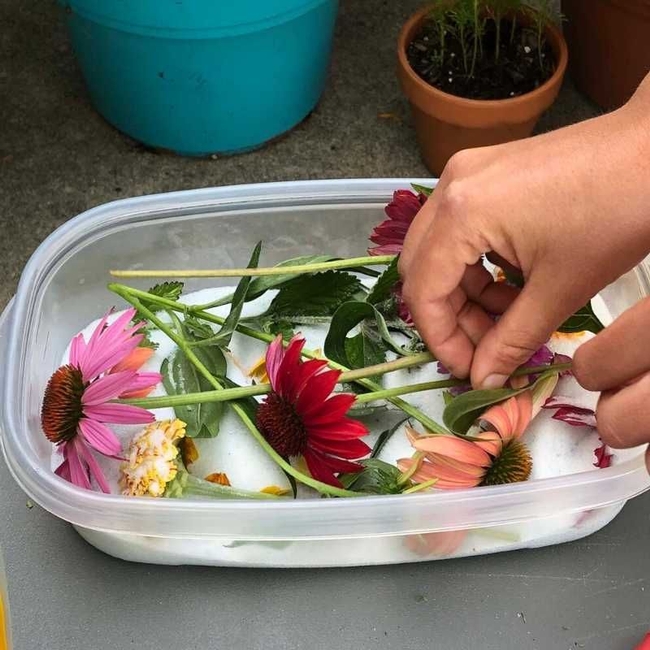Preserving summer flowers, foliage, seed heads, and bracts is a delightfully simple way to accumulate a collection of colorful plant materials from your garden to enjoy throughout the year. Many flowers, seed heads, and some leaves can be preserved by air-drying, often just hung in bunches in a warm, airy room. Leaves gathered when the sap is still rising in the plant, as well as some bracts, can be preserved in a desiccant solution like water and glycerin or silica crystals.
For drying, plant material should be harvested when it is completely free of moisture to avoid the development of mold. If you must gather flowers when they are wet, toss them gently on blotting paper to remove surface water, and stand the stems in a container of water in a warm, dry room until the petals are thoroughly dry. Don't be tempted to start one of the drying processes while the flowers are still damp.
Except for seed heads, it is best to gather flowers for drying early or late in the day; from noon to mid-day the plant is at its most vulnerable and more inclined to wilt than respond to the drying treatment. Gather the flowers at the mid-way stage of their development, or just before they are fully opened. An exception to this rule would be everlastings like statice and strawflowers, which can be harvested when they are in full bloom.
Air drying is the simplest method of preserving plant materials. The process is not an exact science and the actual temperature is not critical, though it should not fall below 50°F. A dry area with no direct sunlight and a small oscillating fan set on low is ideal. Some plant types are best dried upright with the stems loosely held in tall containers and the heads fanning out wide and away from each other. Hydrangea heads and gypsophila are two of the plant materials which can be air dried with their stems standing in a little water. As the stems gradually absorb the water it evaporates and eventually, over a week or so, the plant material dries more or less naturally. Other flowers and foliage may be dried horizontally spread out on racks or shelves covered with absorbent paper. Some plant materials do well hung upside down by their stems. Tie the materials into small bunches, with larger stems tied individually.

Desiccant options available are alum powder (aluminum sulfate) and household borax, both of which are suitable for small, delicate flowers. Silica gel absorbs the moisture from the petals. The blue beads change color from blue to pink once the gel is saturated and needs to be replaced. Desiccants are available at craft and hobby stores. For drying with a desiccant, spread a thin layer in a container, arrange the plant material by type and not touching, then cover them with the desiccant until it forms a top layer about ½ inch above the plant material. Use an airtight tin and set it aside for 2 to 5 days or speed up the process by drying the plant materials in an oven set at the lowest temperature, using an ovenproof dish without a cover, keeping the oven door slightly ajar.
The fastest method is in the microwave. Layer the material in a microwave-proof container without a lid. Process on low power. Since drying times will vary according to the power of your microwave, the type of container used, and the density and moisture content of the plant material, it is best to experiment; check progress every minute or so and make notes of the processing time. Glycerin is another preserving method. The plant material absorbs the glycerin, replacing water content with glycerin, keeping flowers supple and bright. Simply place the stems of fresh flowers in a mixture of two parts lukewarm water to one-part glycerin. Let the flowers sit in the mixture for two to three weeks. Some plant materials will undergo slight color changes with this process.
Whatever method you choose, you could have beautiful plant materials to enjoy throughout the year

